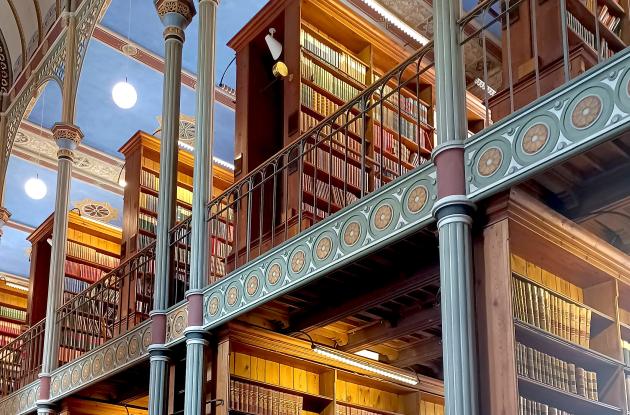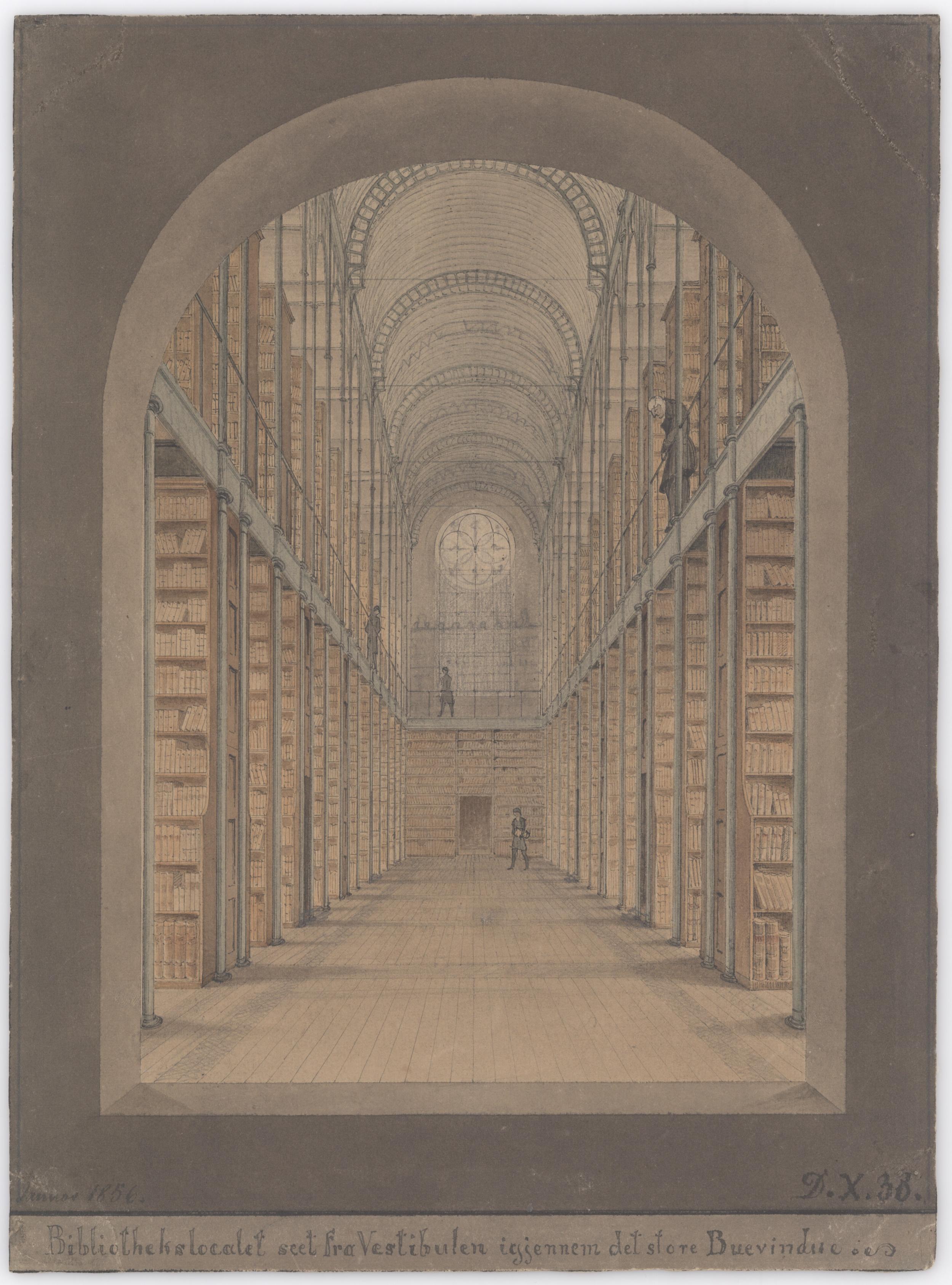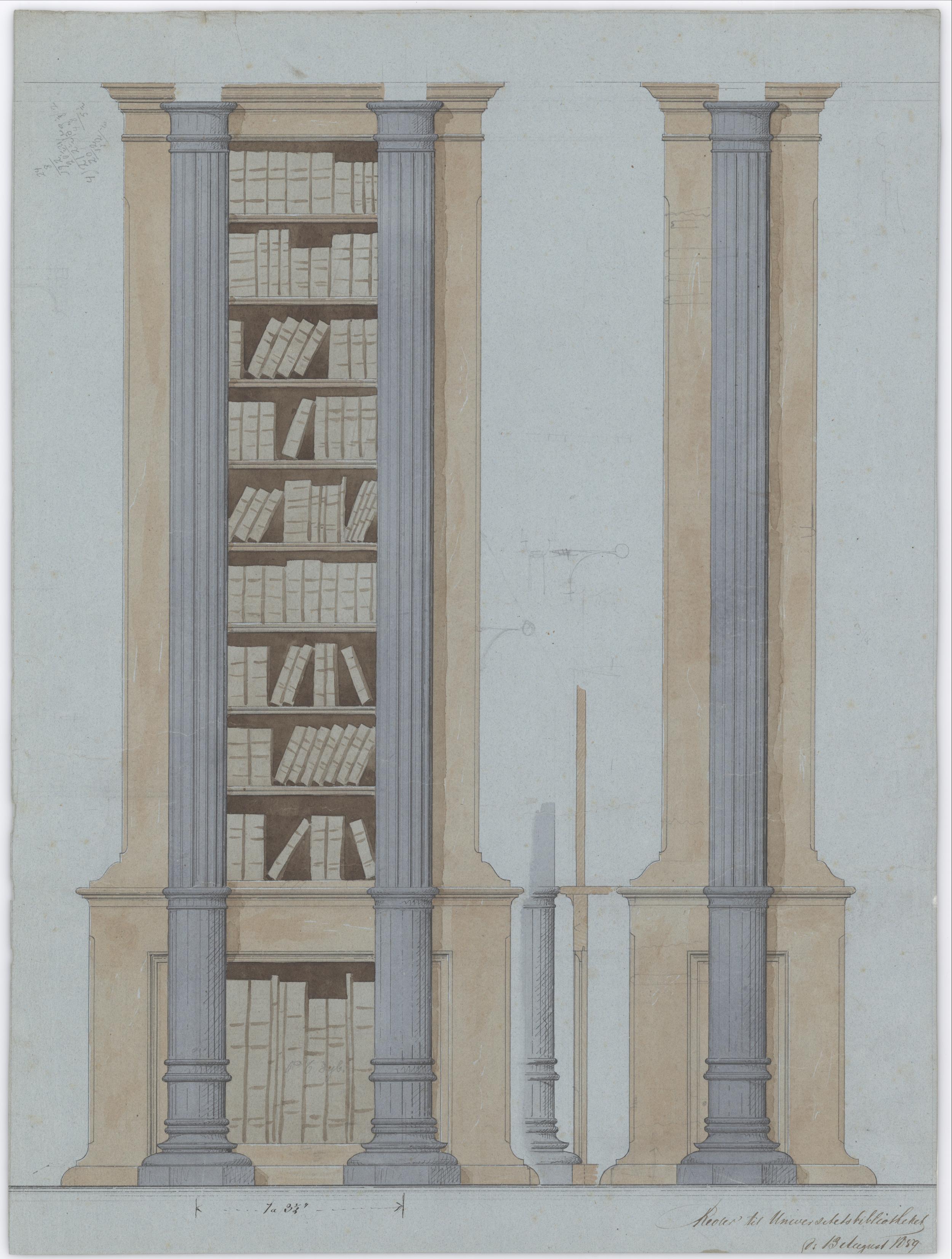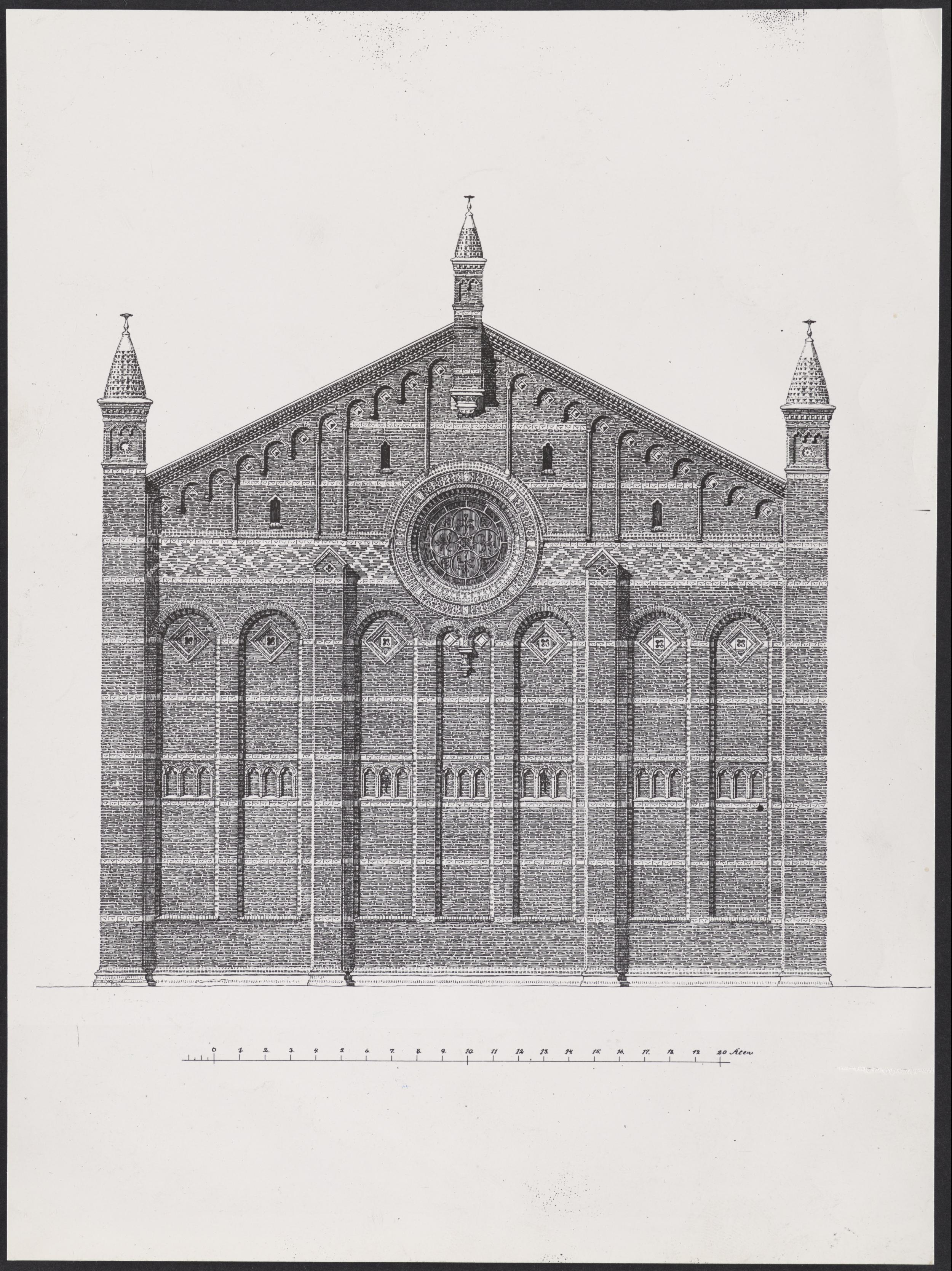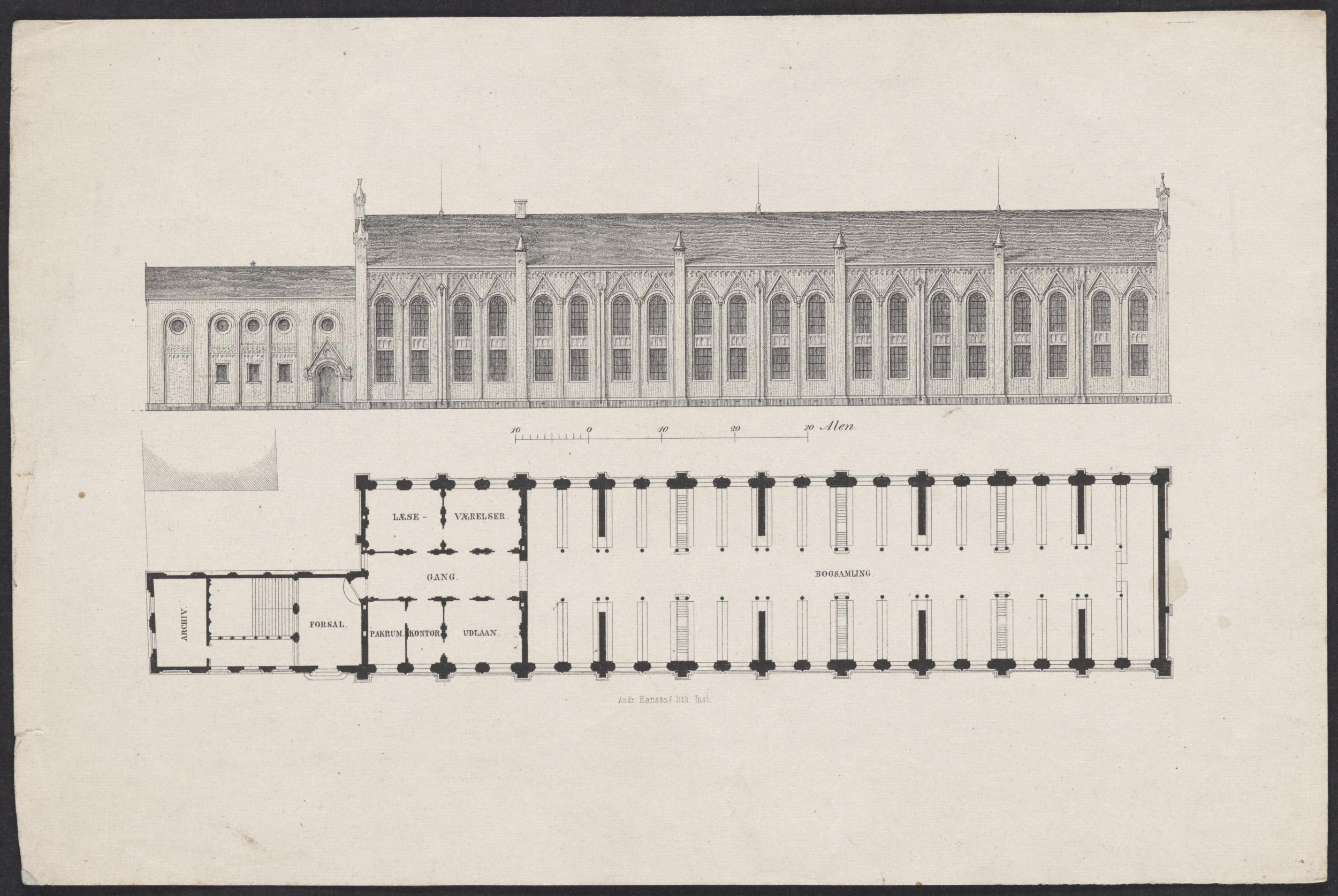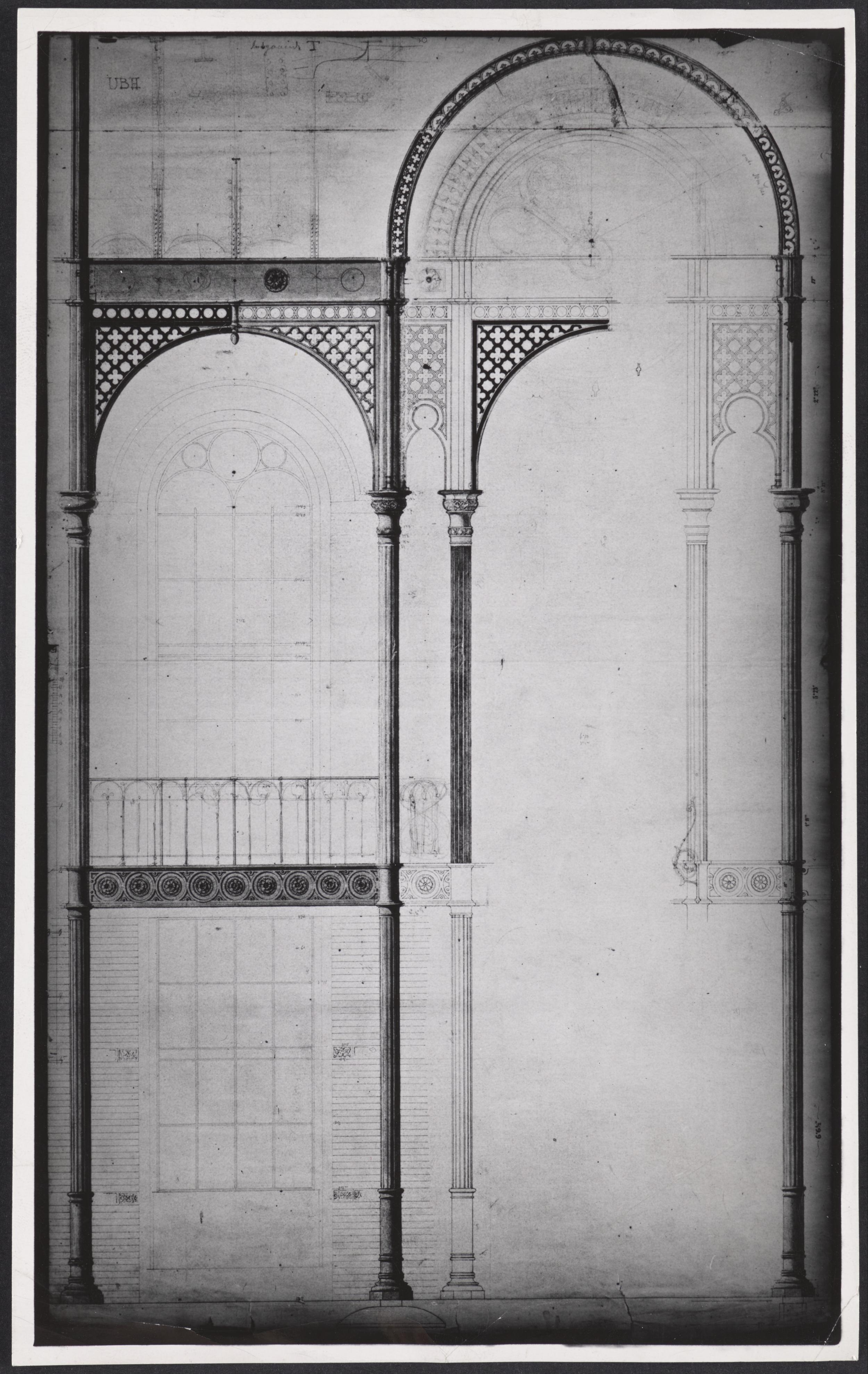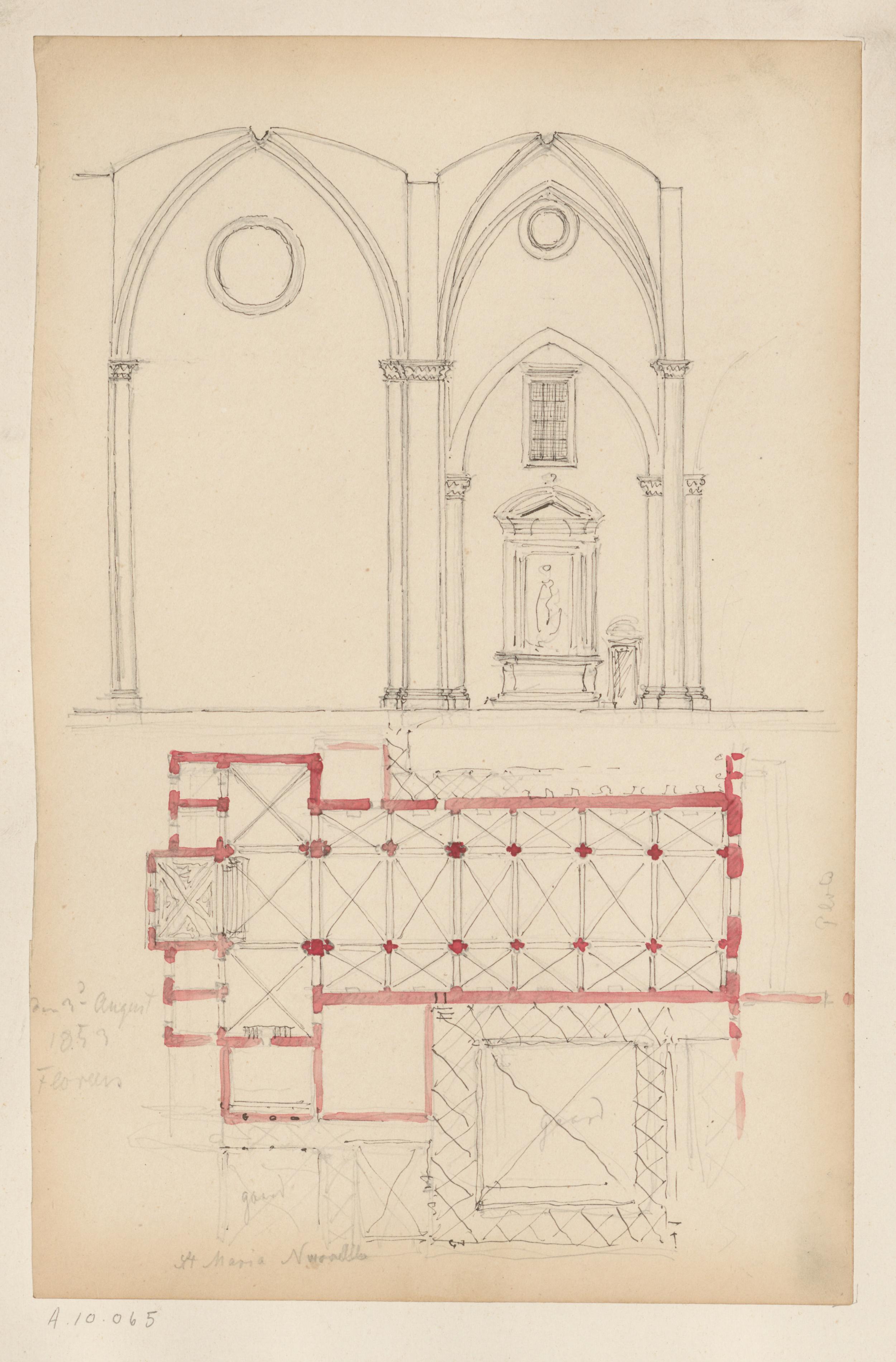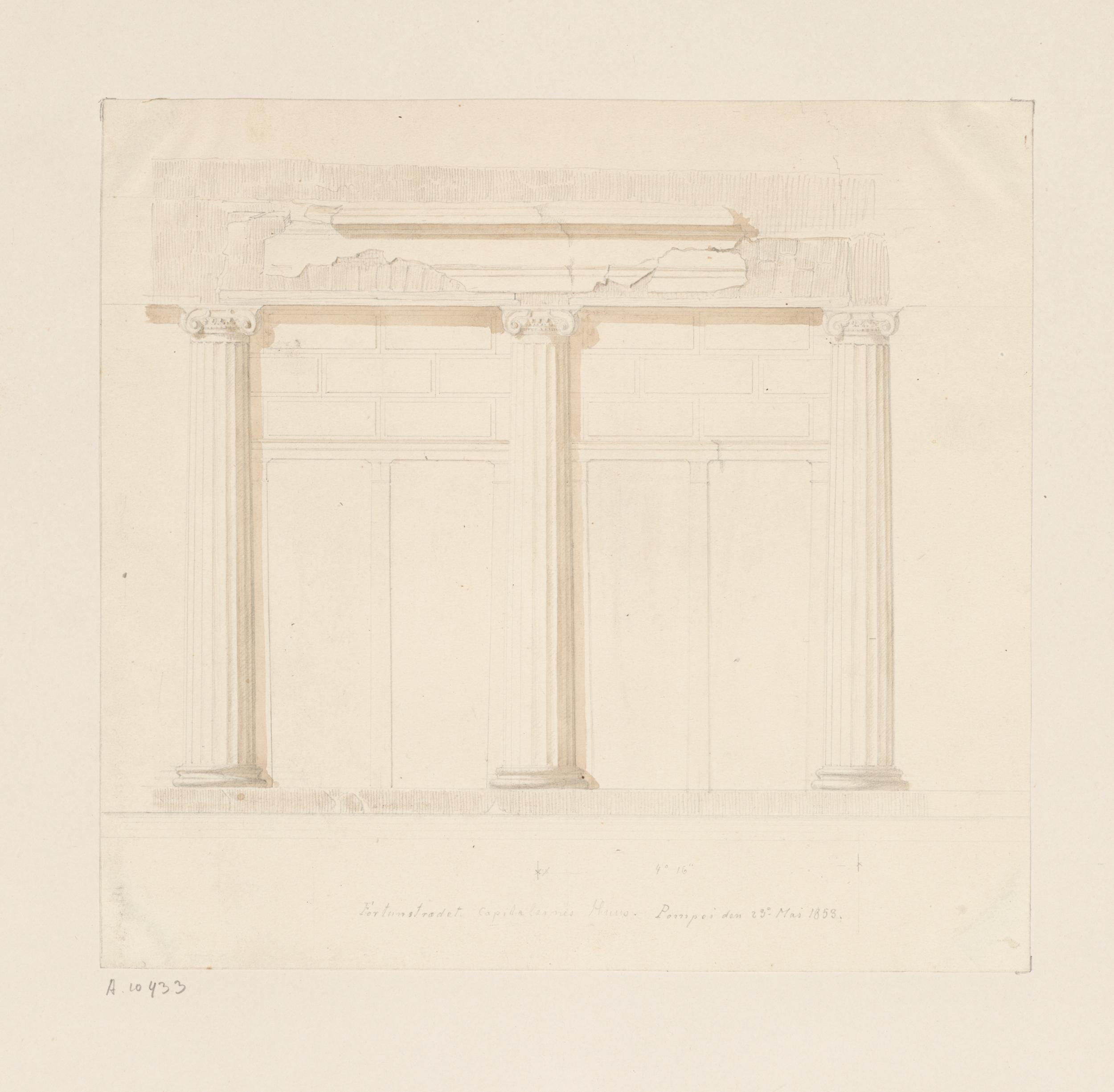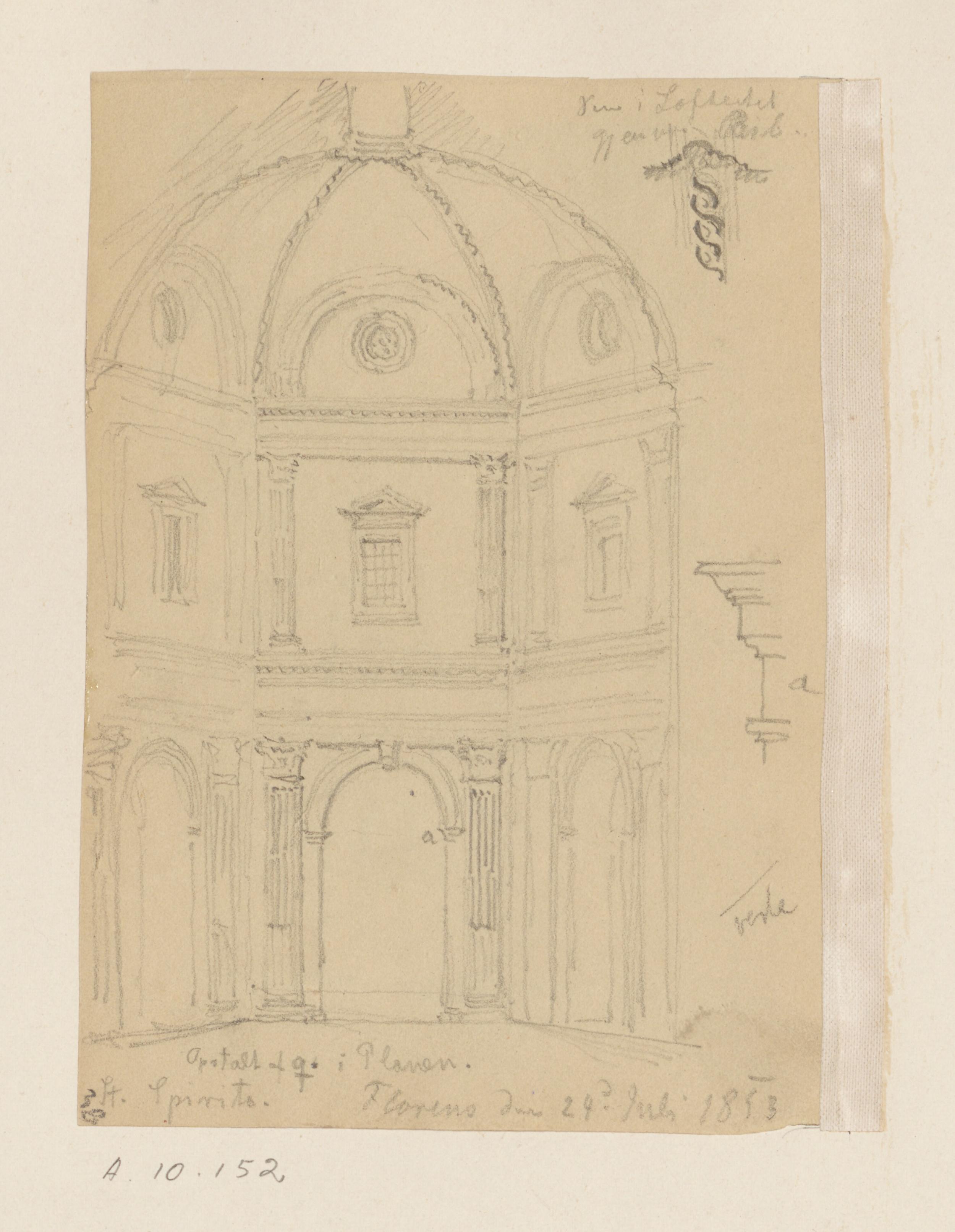A touch of Verona – the library building in Fiolstræde
The old library building in Fiolstræde from 1861 has reopened. We have dug into the building's special history to mark that the building is once again a living part of the library.
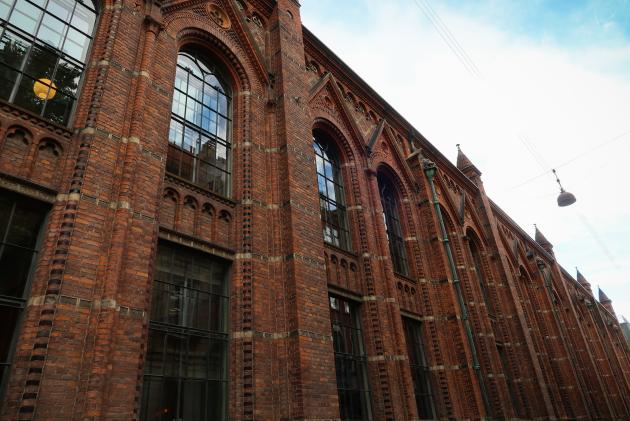
Photo: Det Kgl. Bibliotek
Take a walk down Fiolstræde in inner Copenhagen. Down towards Vor Frue Plads and the old university square. One building stands out very clearly in the streetscape, significantly, like a piece of Verona, located in the middle of Copenhagen. It is the old university library.
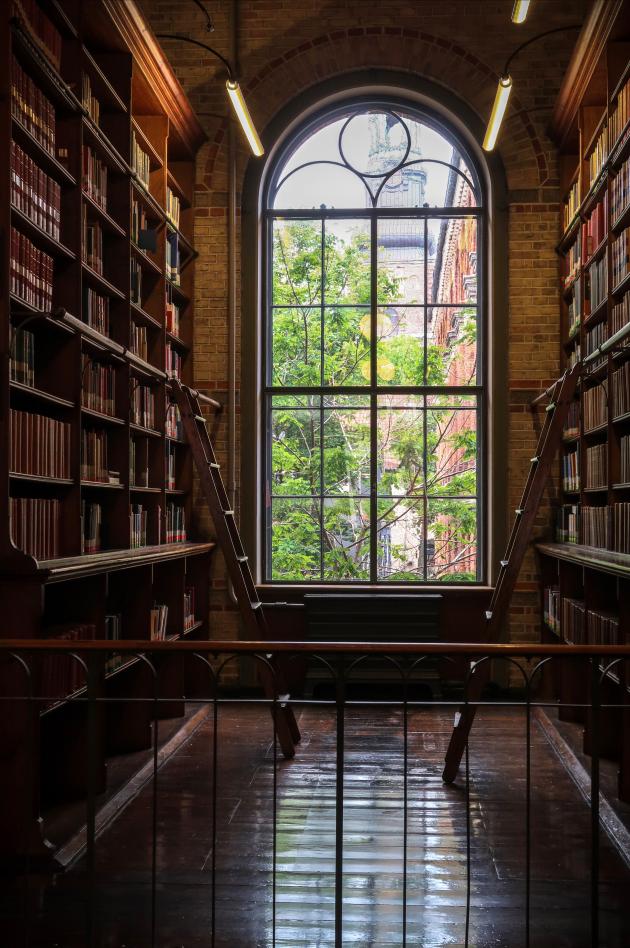
Photo: Det Kgl. Bibliotek
Once upon a time, law students were glued to the books from morning to night, when Royal Danish Library's employees closed the reading room with a gong-gong. Today, the building focuses on communication, dissemination of knowledge and research at the University of Copenhagen. Tourists and curious Copenhageners can step inside, inspect the old building and sniff out the special history between the dark shelves. There are ongoing exhibitions, regular weekly events and live podcast recordings with the audience.
The country's first architectural competition
The history of the building begins in 1852, when a library commission approached the leading architect of the time, Gottlieb Bindesbøll, with the task of designing a new university library. The location was to be in Fiolstræde, close to Trinitas Church, where the old library was located.
However, the commission could not agree on Bindesbøll's proposal. Therefore, they decided to announce the country's first architectural competition for a large public building. It was a young Johan Daniel Herholdt and his sketches who won. Incidentally, ahead of Bindesbøll, who was in many ways his mentor.
Herholdt's plan narrowly won with one vote on the grounds that (translated to English):
“"both because with the modifications in the interior to provide the necessary shelf space, it could be used as the basis for the construction of the building, and also because it offers a much more beautiful appearance, both externally and internally, to which is added the fact that the individual parts are better coordinated, and that the back room only consists of a single room, whereby a clear overview of the entire contents would be achieved."
“
The quote comes from the book JD Herholdt and the University Library in Fiolstræde by Knud Millech, 1961, published on the occasion of the building's 100th anniversary.
Facts: Johan Daniel Herholdt – the architect behind the university library
For the then 38-year-old Johan Daniel Herholdt (1818-1902), the University Library in Fiolstræde was the great breakthrough, and he would leave a decisive mark on Danish architecture in the following decades. He also designed the Botanical Laboratory at the Botanical Garden and the building that today houses the Social Sciences Faculty Library, Gothersgade 140.
The Wandering from Verona
Herholdt took his inspiration from the Gothic brick cathedrals, but in a quite free interpretation. The inspiration from Italy was undeniable, from his own travels and sketchbooks, and which can be seen, for example, in the characteristic pinnacles (towers) that adorn the building as pure aesthetic columns.
The exterior of the building with its characteristic red bricks is not so striking today. But at the time it was unusual to use bricks as a facade material - at least for large buildings. People built with plastered facades, such as the university building itself on Vor Frue Plads.
The use of brick in the university library created a trend for the next several decades. Not least, red brick came to dominate.
Inside, the yellow surfaces dominate, and both the exterior and interior surfaces are adorned with an endless array of decorative details.
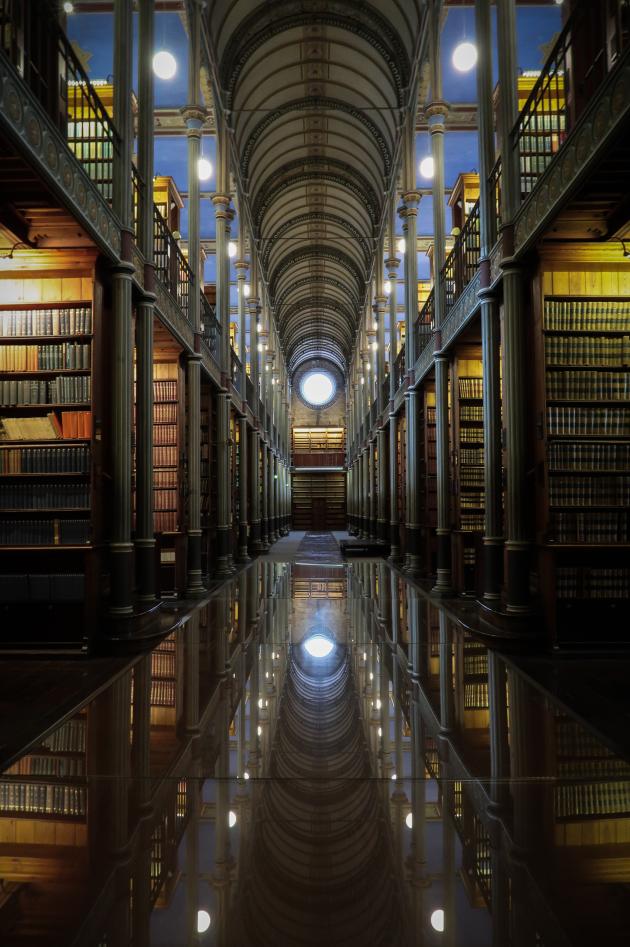
Photo: Det Kgl. Bibliotek
The masterpiece is the library's book room, which extends over two floors and spans most of the house. The beautifully crafted cast iron construction and the many decorative details, all executed with a high level of craftsmanship, together create a space that is unique in Danish and European architecture.
The university library was completed in 1861, and by October of that year all the books were in place. It was designed for approximately 300,000 volumes, and it was probably believed that this would secure it well into the future.
However, by 1900 it had already become too small, even though far more shelves were moved in than Herholdt had intended.
Renovation, closing and reopening
In 1996-97, the library building in Fiolstræde underwent a thorough restoration by the royal building inspector David Bretton-Meyer. The many extra shelves that had been added over the years were removed, so that the capacity was reduced from over 600,000 volumes to the original almost 300,000.
The decorations were restored, and the original auditorium, which for many years had been divided into several smaller rooms, was re-established, now as a catalogue and computer room.
The university library was designed as a modern library with newly established reading and work spaces, and IT facilities.
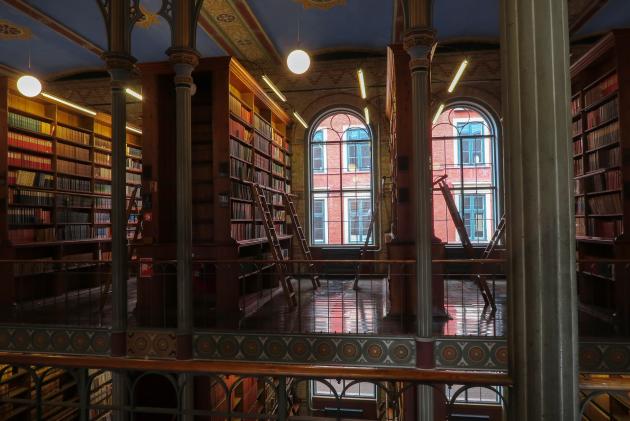
Photo: Det Kgl. Bibliotek
The library in Fiolstræde had also been given a new primary function, namely to be a daily library for the social sciences, that is, the subjects under the Faculty of Social Sciences and the Faculty of Law. In order to improve the library service, a collaboration was established with Royal Danish Library, which effectively became responsible for the operations within the red walls.
The old library building in Fiolstræde was always well visited. Both by ordinary users who used the newspaper reading room and picked up their books, and curious tourists who wanted to soak up the special atmosphere of the place and admire the architectural work.
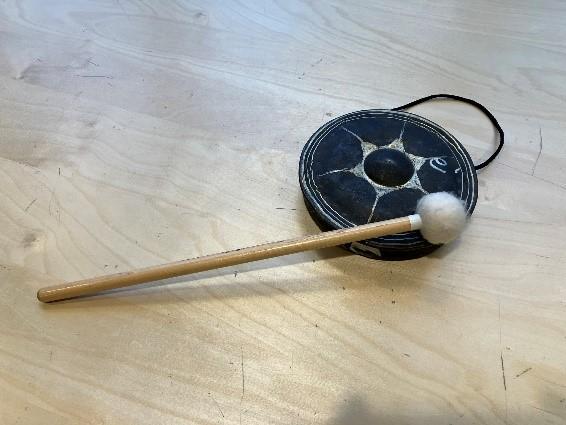
Photo: Det Kgl. Bibliotek
The closing time was usually at 7 p.m.
recalls one of our librarians who used to work in Fiolstræde. It was always customary for the librarian to go around and hit the manual gong-gong. The library closes.
It was also not uncommon for a few of the 'city's loose birds' to seek refuge between the shelves, taking a little nap and maybe an evening snack. That's why we also carried a walkie-talkie so that you could get in touch with the security guard at the door. Just to be safe.
There was reason for a little extra attention at the library. The special King Packages and other collected specialties were hidden in the building.
Facts: About the King Packages
The Royal Library has 17 'packages' of printed material relating to the following Danish kings and their families: Frederik III, IV, V, VI and Christian VI, VII, VIII. They are called the "king packages".
The King Packages come from the University Library's 1st Department (UB1) and are administered by the Catalogue Office under Legal Deposit.
The materials are in different formats, but all have the character of individual prints on magazines of 1-5 pages. They deal with various topics such as speeches, occasional songs and carols on the occasion of anniversaries such as birthdays, weddings, funerals and school openings, but they can also be posters and declarations et cetera on various topics.
The prints are mostly unregistered, but some of them have records in the library system that users can order. This search shows those of the prints that have so far been ordered and registered as part of the King Packages.
If there is interest in this type of material, the user can contact Ask the Library .
The Bomb Book - Defender of Peace (Defensor Pacis, 1522)
For many years, the “Bomb Book”, the Defender of Peace (Defensor Pacis, 1522), resided in a display case in the hallway facing the library hall itself. The book originally came from the old university library at Trinitatis Church, the forerunner of the Fiolstræde building. During the English bombardment of Copenhagen in 1807, a cannonball went through the roof of the church and left a large hole in the book, which ironically was supposed to be the Defender of Peace.

Photo: Det Kgl. Bibliotek 2003
The book is now on permanent loan from Royal Danish Library for exhibition in Rundetårn on the floor above the Trinitatis Church.
In 2009, Royal Danish Library and the University of Copenhagen finally closed the library function in the building. The space had been cramped for far too long and the building was no longer suitable for facilitating a modern university library for many reasons. The collections were moved to Royal Danish Library in the Diamond, to a new law faculty library in Studiestræde, or to the newly opened faculty library in Gothersgade for social sciences (KUB City Campus today).
In 2023, a new cooperation agreement between Royal Danish Library and the University of Copenhagen around Fiolstræde reopened the building. The shelves are filled with selected books from the older collections and employees once again have a daily routine in Fiolstræde.
If you want to visit the library building, you can find opening hours and other information on the website.
